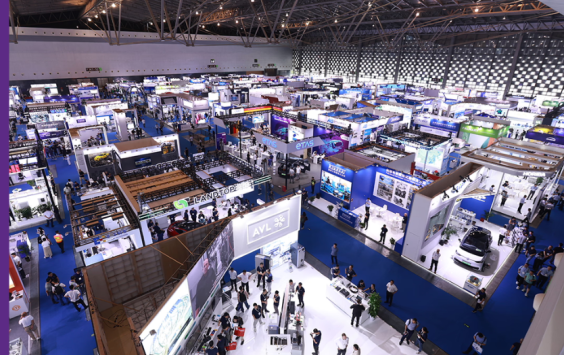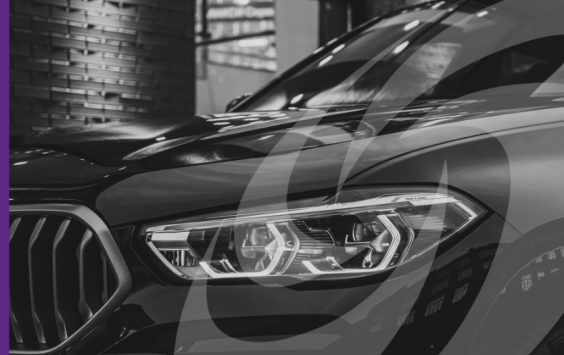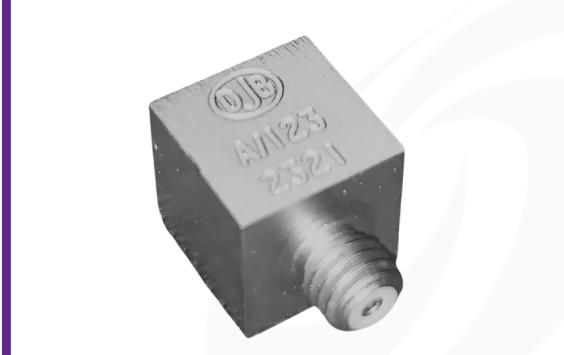Choosing the right accelerometer
Selecting the best accelerometer for your test environment involves more than just matching size or cost. Factors like temperature range, sensitivity, cable type, and signal conditioning all affect performance and accuracy.
This guide outlines the critical differences between charge and IEPE accelerometers and highlights the key considerations that help ensure reliable, repeatable results.
IEPE accelerometers: voltage output and simplicity
IEPE (Integrated Electronics Piezoelectric) accelerometers contain internal electronics that convert the charge signal into a stable voltage output. This voltage can be transmitted through standard coaxial cables, making the sensor more resistant to electrical noise and cable interference.
Typical operating range: 125°C (up to 185°C with high-temperature variants).
Advantages: Simple connection, no charge amplifier needed, easier setup for general applications.
Limitations: Fixed sensitivity and range, lower maximum temperature, less robust than charge types.
Key considerations for IEPE sensors
- Requires a stable, constant current supply
- Sensitivity and time constant are fixed
- More costly per unit
- Less flexible for high-temp or complex setups
Charge output accelerometers: high-temperature performance
Charge output accelerometers generate a signal directly from the piezoelectric element. This signal is high impedance and requires a low noise cable and a charge amplifier for signal conditioning.
Typical operating range: Up to 260°C and beyond
Advantages: High temperature tolerance, greater flexibility with gain and filtering via the charge amplifier
Limitations: Sensitive to cable noise and handling, more complex setup, requires extra instrumentation
Key considerations for charge sensors:
- Use only low noise cables
- Keep cables short to reduce signal distortion
- Cable flex and connector contamination can affect signal quality
- Offers variable gain, time constant, and better high-temp operation
Sensitivity and resolution
The right sensitivity depends on the range of vibration you're measuring. High-sensitivity sensors (e.g., 100 mV/g) are ideal for low-vibration environments, while lower-sensitivity sensors (e.g., 10 mV/g) are better for high-level signals.
Example:
- A 10 mV/g sensor measuring 0.1 g will only return 1 mV — too low for some systems.
- A 100 mV/g sensor measuring 500 g will return 50V, which could exceed system limits.
Choose a sensor that delivers a clear signal within the limits of your DAQ system.
Mass and sensor weight
An accelerometer adds weight to the test item, potentially changing its dynamic response. As a rule of thumb, the sensor should not exceed 10% of the test subject’s mass. DJB offers accelerometers as small as 0.19 g — suitable for delicate items like PCBs.
Ground isolation and mounting
When mounting on conductive surfaces, use a ground-isolated accelerometer to prevent ground loops and avoid signal interference. Learn more in our dedicated Mounting Guide.
Temperature range
IEPE accelerometers operate up to 125°C (or 185°C in DJB’s high temperature range). Charge accelerometers typically perform up to 260°C or more. Match your sensor’s temperature rating to your test conditions.
Calibration
Like all precision instruments, accelerometers drift over time. Regular calibration helps maintain data accuracy and ensures compliance with quality standards.
Cable selection: avoid noise and errors
- Charge sensors must use low-noise cables to reduce triboelectric noise (motion-induced errors)
- IEPE sensors are more tolerant but still benefit from shielded coaxial cables
- Standardising all cables to low-noise type helps avoid mix-ups in mixed-sensor environments
For a practical demonstration of cable noise and guidance on cable selection, visit our YouTube channel.
Need help choosing the right accelerometer?
Whether you're testing in harsh environments or need advice on sensor compatibility, our team is here to help.
Contact our experts or call us on +44 (0)1638 71 22 22

Dive into DJB’s growing library of expert-written resources, including technical articles, selection guides, and in-depth explainers on accelerometers, cables, and signal conditioning.
Whether you’re specifying new sensors or troubleshooting complex setups, our content is designed to support your success.






